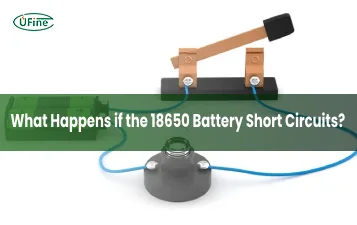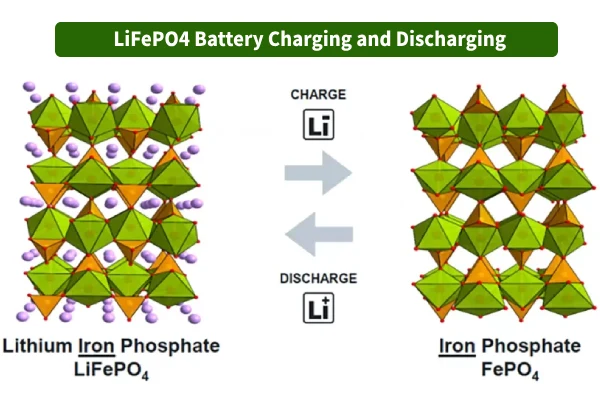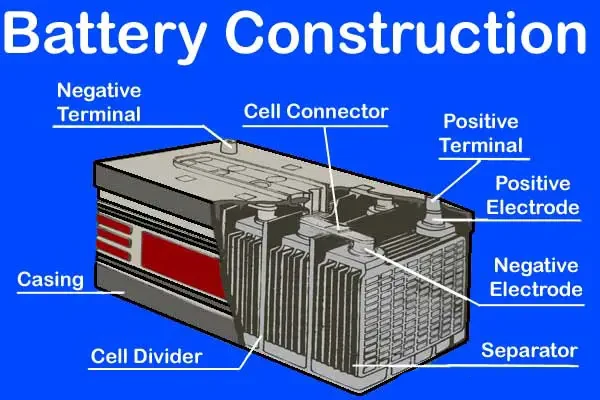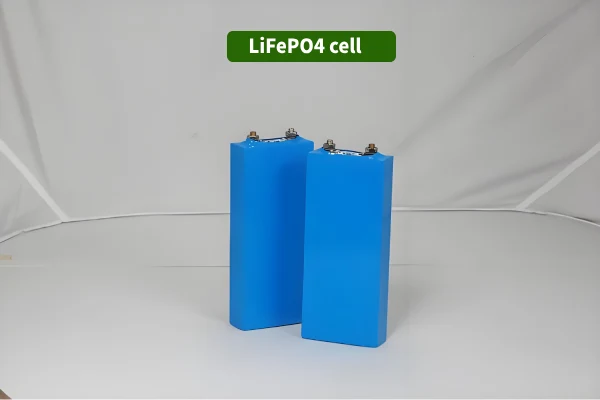Part 1. What is a lithium iron phosphate battery?
LiFePO4 battery (LiFePO4, referred to as LFP) refers to a lithium-ion battery using lithium iron phosphate as the cathode material. Its working principle is the same as that of lithium-ion batteries.
The physical structure of LiFePO4 is olivine structure. Its characteristics are that it does not contain precious elements, the price of raw materials is low, and the resources of phosphorus, iron, and lithium are abundant on the earth, so there will be no major problems in the supply of materials. In addition to the common characteristics of lithium batteries, the lifepo4 battery has some unique advantages. For example, it has a moderate working voltage (3.2V), large capacity (170mAh/g), high discharge power, fast charging and long cycle life, and high stability in high temperature and high thermal environments.
Part 2. How long is the LiFePO4 battery life?
The life of a LiFePO4 battery is generally between 5 and 10 years. The specific life is affected by many factors, including frequency of use, charging speed, and ambient temperature. Under normal use and maintenance, the life of a lithium iron phosphate battery can reach 5-10 years or even longer.
The LiFePO4 battery cycle life is also very important, and its cycle life can reach more than 2,000 times. This means that under standard charging conditions, the battery can complete 2,000 charge and discharge cycles. In theory, if charged once a day, a LiFePO4 battery can cycle for about 5 years. But in reality, depending on the usage and maintenance, the life of a lithium iron phosphate battery may vary.
Taking a variety of factors into consideration, the LiFePO4 battery life is about 8 years. And in areas with warmer climates, the LiFePO4 battery life is even longer. This makes the LiFePO4 battery popular in many application scenarios that require long-term stable operation.
However, if used improperly or maintenance is neglected, the life of the battery may be shortened.
Part 3. Why is the LiFePO4 battery life shorter?
A significant advantage of LiFePO4 battery is that its decay rate during its life is relatively slow. In the case of good quality, the decay of LiFePO4 battery in the first year can be controlled within 5%. In the second year, it can be within 15%. This means that LiFePO4 battery can maintain relatively stable performance during long-term use.
However, this does not mean that the performance of the battery will always remain at its best. Over time, the energy density and cycle life of the battery may gradually decrease. In addition, if the battery is not used for a long time, self-discharge may occur, resulting in a decrease in battery capacity.
1. Number of cycles
The number of cycles is one of the main factors for shortening. After many cycles, the structure of the positive electrode material will change, resulting in an increase in its internal resistance, self-discharge and a decrease in capacity. Therefore, it is very important to extend the life of the battery and reduce the impact of the number of cycles on battery performance.
2. Heat
The battery will generate a small amount of heat during use. If the internal temperature of the battery is too high, it will cause the battery capacity to decrease, thus affecting the LiFePO4 battery life.
3. Internal resistance
Internal resistance is one of the main factors for battery decay. The conductivity of the electrolyte inside the battery is reduced, especially in a low temperature environment, which affects the performance of the battery.
4. Temperature
High temperature will accelerate the speed of the chemical reaction inside the battery, resulting in a decrease in the battery capacity. Low temperature will increase the internal resistance of the battery, thereby affecting the discharge performance of the battery.
5. Humidity
The battery is prone to short circuit in a humid environment, resulting in a shortened LiFePO4 battery life.
6. Use environment
The battery encounters environmental factors such as falling and vibration during use, or is exposed to sunlight outside, which will also reduce the life of the LiFePO4 battery.
Part 4. How to extend the LiFePO4 battery life?
In order to extend the life of the LiFePO4 battery, the following tips are crucial.
- Maintain a proper charge and discharge cycle: Overcharging or over-discharging will have a negative impact on the battery life. Therefore, the battery should be charged and discharged between 20%-80% of the charge state as much as possible to extend the battery life.
- Avoid high temperature environment: High temperature will accelerate the aging process of the battery. Therefore, try to avoid exposing the LiFePO4 battery to high temperature environment. Ideally, the best operating temperature of the battery should be between 20-30℃.
- Check the battery status regularly: You can understand the battery usage status by monitoring the battery voltage, current and other parameters. If abnormal conditions are found, timely measures should be taken, such as replacing damaged battery components.
- Proper storage of batteries: LiFePO4 batteries that have not been used for a long time should be stored in a dry and cool place to prevent the occurrence of self-discharge. In addition, users can also perform small current charging and discharging regularly to maintain the activity of the battery
Part 5. Lithium iron phosphate battery cost
The positive electrode, negative electrode, electrolyte, lithium battery copper foil, and separator are the main direct materials of lithium batteries.
1. Cost of cathode materials
The cathode material is the most important material cost, accounting for about 55%. Lithium-ion batteries are mainly divided into lithium iron phosphate batteries and ternary batteries based on different cathode materials, and power batteries include both.
2. Cost of negative electrode materials
Anode materials account for about 14% of the total cost, including artificial graphite and natural graphite. Artificial graphite can be used in power batteries and energy storage batteries. In contrast, natural graphite is mostly used in consumer batteries.
3. Electrolyte cost
The electrolyte accounts for about 13% of the total cost, and its main components are solutes, solvents, and additives. Solutes include LiPF6 and the new lithium salt LiFSI, the main cost sources. Solvents are mainly cyclic and chain carbonates, including PC, EC, DMC, DEC EMC, etc. Additives are mainly used for film formation, overcharge protection, low temperature resistance, flame retardancy, magnification improvement, etc. Common products include VC, FEC, PS, LiBOB, DTD, LiDFOB, etc.
4. Lithium battery copper foil cost
Lithium battery copper foil is electrolytic copper foil, which accounts for about 8% of the cost. Lithium battery copper foil is used for lithium battery negative electrode current collector.
5. Diaphragm cost
Separators account for 4% of the total material cost and are divided into wet separators and dry separators. The main cost of wet separators is PE, and the main component of dry separators is PP.
Part 6. Summary
In short, when using LiFePO4 battery, as long as the correct use and maintenance methods are followed, this high-performance battery can still maintain good performance even for 8 years or even longer. However, it should be noted that any battery has a certain service life, so when choosing a LiFePO4 battery, its economy and maintainability should be fully considered.
Related Tags:
More Articles

18650 Battery Short Circuit: Risks and Safety Tips
Discover what happens during a 18650 battery short circuit, warning signs, and how to avoid fire, damage, and hazardous failures in your devices.
LiPo Battery Discharge Rate Guide & Calculation Tips
Understand LiPo battery discharge rates, C-ratings, and how to calculate max current. Essential guide for RC, drones, and electronics users.
High‑Capacity 3S LiPo Batteries: 5000 mAh vs. 10000 mAh
Compare 3S LiPo 5000mAh vs 10000mAh batteries by weight, power, and use. Find the best fit for your drone, RC car, or boat setup.
Top 5 Applications for Small 3S LiPo Batteries
Small 3S LiPo batteries power drones, RC gear, wearables, and robotics with high energy and low weight. Making them ideal for compact electronics projects.
Building and Charging Your Own 3S LiPo Pack: A Step‑by‑Step Guide
Learn how to build, balance, and charge a 3S LiPo battery pack safely at home with this complete DIY guide for hobbyists and beginners.






